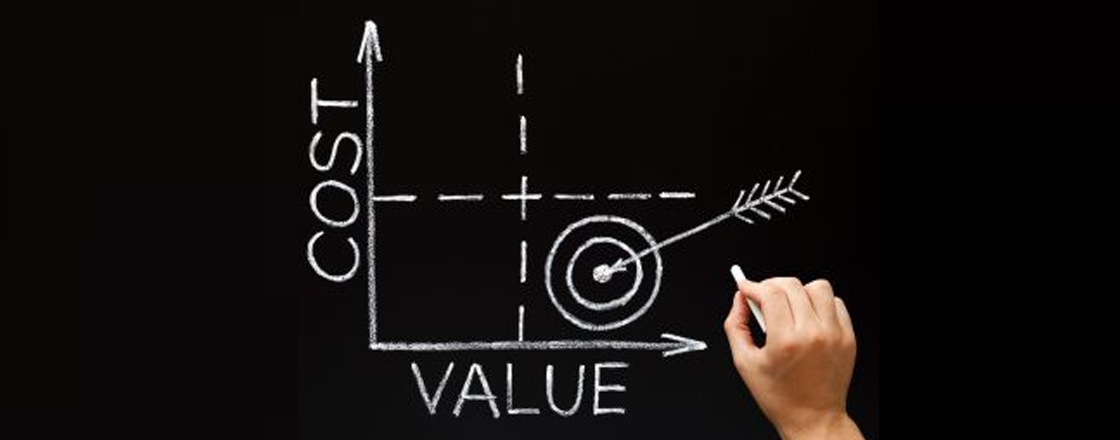Cost Analysis: Leverage This Important FBA Decision-Making Tool (Part 1 of 2)
This is part 1 of a two-part article. Today, our discussion will center on the significance of cost analysis for your FBA store, and how you can best utilize this financial information to your advantage.
It is said that there is nothing more shocking than the truth. But did you know that many Amazon FBA sellers do not have a solid grasp of cost analysis? By neglecting this vital business skill, they are unnecessarily blocking the path to sound project decision-making.
Today’s Amazon FBA store owners have a lot more concerns when it comes to enhancing market share; offering better goods and services; boosting sales; and improving the bottom line of the company.
As an entrepreneur and owner of an FBA store, one of your greatest leverages for taking your business to the next level is your understanding of costs. This skill is crucial to the success of your startup business as well as technical and product development projects.
What is Cost Analysis?
Cost analysis is defined as, “A comparison of one entity’s cost position to another. Cost analysis compares everything from the price paid for raw materials right to the price customers pay for the finished product. The goal of the analysis is to determine whether or not one company’s costs are competitive with another’s.”
—BusinessDictionary.com
The Importance of Cost Analysis
Business or project development entails a continuous back and forth interaction between two major factors, i.e., the goals and objectives of the company versus cost (available budget). More often than not, money is the ultimate determining factor with regard to the choice of design components, which may impact the project’s long term viability. To aggravate the matter, this tradeoff usually happens at a point when you have invested so much time and resources on the project. When it’s too late to alter the design, it leaves you with one painful option—to eliminate certain product components.
Cost analysis is of paramount importance because regardless of how good you are at gathering financial data, they can be useless if you don’t understand or know how to effectively utilize them.
The Best Time to Begin Cost Analysis
The best time to start conducting a cost analysis is when the project is still in its infancy stage. Starting the cost analysis process early will help ensure that as the project unfolds, the evolving design will be feasible, tangible, practical, and can be built on budget as well as on specification.
Dealing with Tradeoffs
We live in a world where a limited budget is a harsh reality. Oftentimes as we weigh things between features and budget, budget wins, and some fancy (and even useful) feature will have to go. Fortunately, tradeoffs can be minimized if costs are continually analyzed, monitored and controlled throughout the duration of the project, thereby reducing their impact on critical design components.
Utilizing Financial Information to Your Advantage
Business owners; sales, production or project managers; and other decision makers receive financial information on a regular basis. As a leader and decision maker, you are expected to possess the skills needed to use financial information in a way that helps you make good judgment and decisions with regard to costs, investments, selling prices, and profit.
With the rapidly shifting business scenarios and increasing business competition, it is only necessary that managers have the ability to formulate realistic and attainable strategies; and more importantly, to analyze company goals in financial terms and then measure performance.
Whether you are selling goods or services, you ought to know the fundamental techniques and methods of cost analysis. Armed with this skill and knowledge, you will be able to see how your company interacts with and influences your customers, your market, and the rest of the external world. Cost analysis encapsulates everything you need to do in financial terms as you formulate your plans, make decisions, take control of various situations and steer your project toward completion.
As an FBA store owner, the information you need for an effective cost analysis is readily available to you—analyze it, act on it and use it to communicate with your team!
We have come to the end of part 1 of this article. In part 2, get ready to learn about the preparatory steps, and how to conduct an effective cost analysis.
Be Vigilant in Checking on Your Reimbursements
Being an Amazon FBA seller puts you in a dire situation whenever Amazon loses or damages your inventory. If you’re looking for a way to get back the thousands of dollars Amazon owes you; you are not alone.
The fact is Amazon owes 99 percent of sellers money.
The policies Amazon has in place for getting your money back in those situations are vague. They make you jump through hoops and loops; but even doing all that is no guarantee you’ll get your money back.
You need someone with years of experience handling your reimbursement claims for you.
So now there’s no need for your capital to get tied up in lost or damaged inventory. The solution to your problem lies at your fingertips.
Seller Investigators manually submits and manages these requests on a weekly basis, making sure damaged and lost goods are identified, tracked and credited to your account. You receive bi-weekly reimbursements from Amazon without having to do a thing!
Our team can do all the legwork for you in collecting the money Amazon owes you, so you can focus on taking care of your business.




